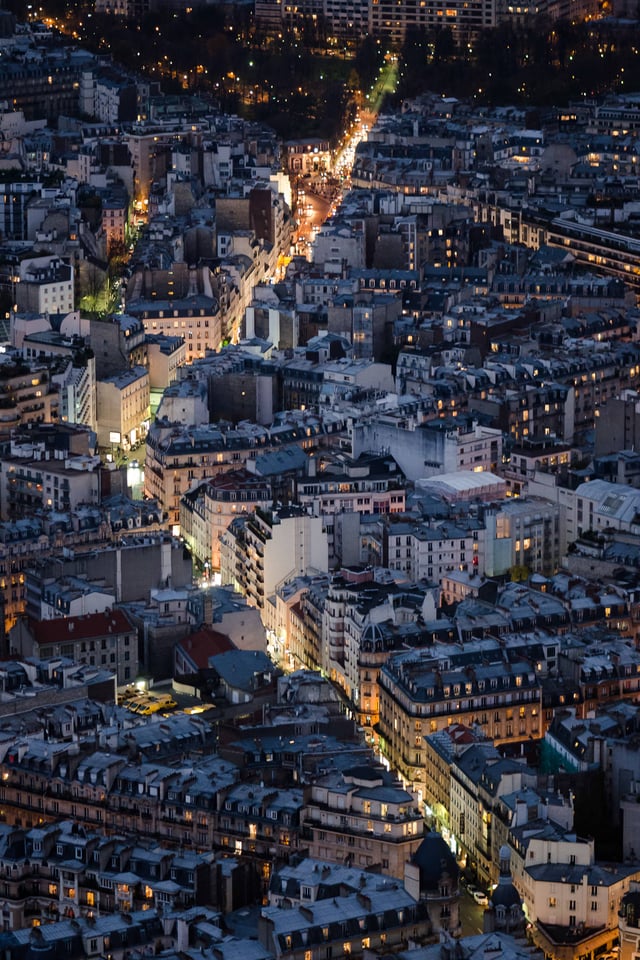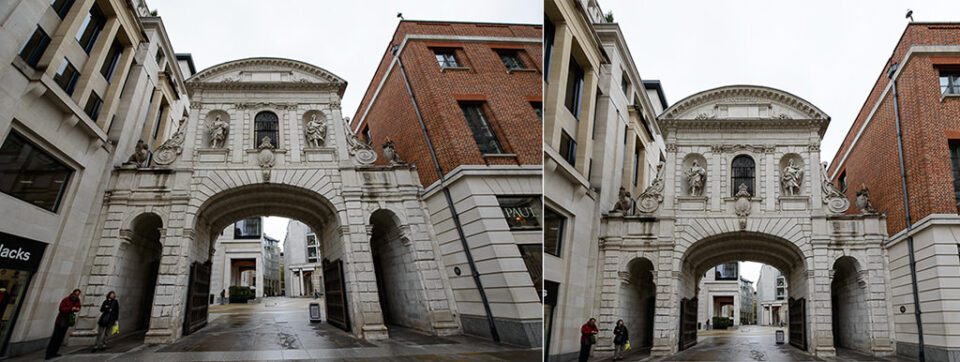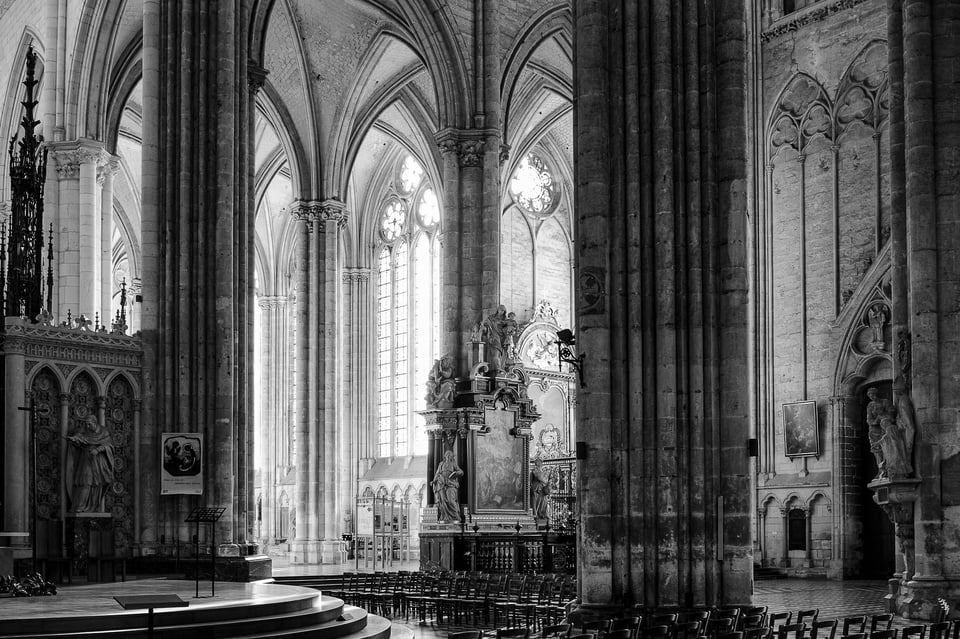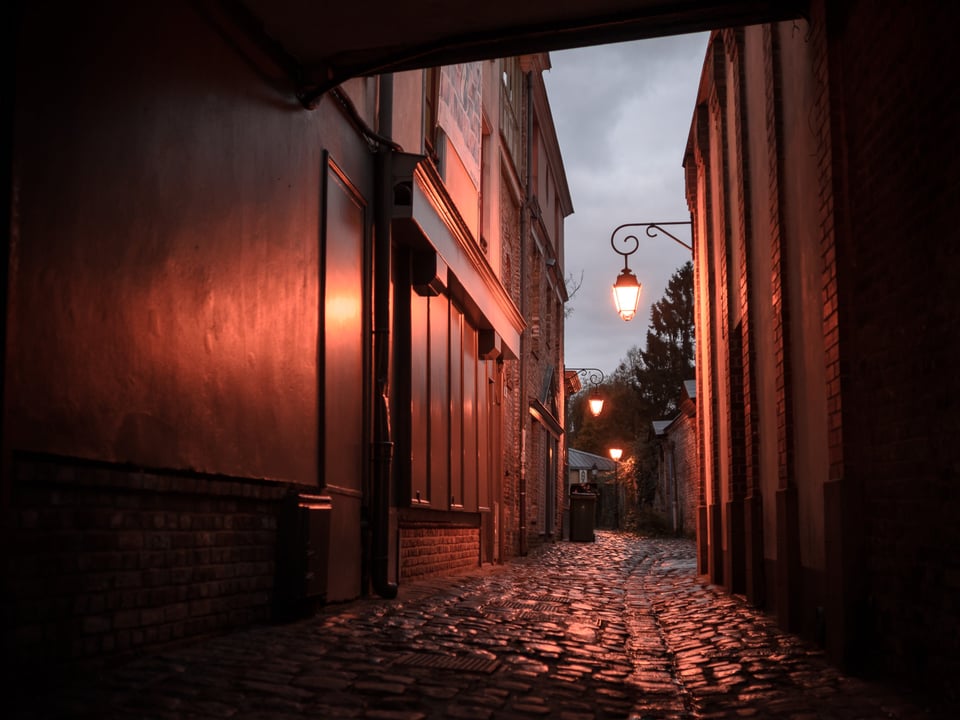دروس التصوير المعماري
Architectural Photography
Tutorial
الضوء والأشكال والخطوط والأشكال - أسس التصوير الفوتوغرافي. بغض النظر عن الأهداف التي تقوم بتصويرها، فسوف ينتهي بك الأمر إلى العمل بهذه الميزات لكل صورة تلتقطها. ومع ذلك، فإن التصوير الفوتوغرافي المعماري يأخذه إلى مستوى آخر، بخطوطه وأشكاله الهندسية المثالية التي يصعب العثور عليها في أي مكان آخر في العالم. في هذه المقالة، سأغطي كل شيء بدءًا من التصوير المعماري الداخلي وحتى "المناظر الطبيعية الحضرية" الخارجية ومناظر المدينة، بما في ذلك بعض النصائح والحيل التي أستخدمها طوال الوقت في صوري الخاصة.
ملاحظة سريعة: نعتذر عن عدم نشر مقال في الأسبوع الماضي. لقد كنت أنا ونسيم في نيوزيلندا منذ بداية شهر ديسمبر، ولم يكن من الممكن نشر أي شيء دون اتصال موثوق بالإنترنت. قد تظل مقالاتنا متقطعة حتى نعود إلى المنزل في نهاية شهر ديسمبر، لذلك نقدر سعة صدرك. في الوقت الحالي، قمنا بنشر مقالاتنا المتراكمة من الأيام الأخيرة. نأمل أن تكون الصور التي نعيدها من هذه الرحلة تستحق العناء!
جدول المحتويات
معدات الكاميرا
إعدادات الكاميرا
العمل مع الضوء
التخلص من الأشخاص
الخاتمة
Light, shapes, lines, forms — the foundations of photography. No matter what subjects you shoot, you’ll end up working with these features for every photo that you take. Architectural photography, though, takes it to another level, with its perfect geometrical lines and shapes that are hard to find anywhere else in the world. In this article, I will cover everything from indoor architectural photography to outdoor “urban landscapes” and cityscapes, including some tips and tricks that I use all the time in my own photos.
A quick note: Apologies that we have not posted an article this past week. Nasim and I have been in New Zealand since the beginning of December, and it has not been possible to publish anything without a reliable Internet connection. Our articles may still be sporadic until we get home at the end of December, so we appreciate your patience. For now, we have published our backlogged articles from recent days. Hopefully, the photos we bring back from this trip will be worth it!
Table of Contents
Architectural Photography
Tutorial
الضوء والأشكال والخطوط والأشكال - أسس التصوير الفوتوغرافي. بغض النظر عن الأهداف التي تقوم بتصويرها، فسوف ينتهي بك الأمر إلى العمل بهذه الميزات لكل صورة تلتقطها. ومع ذلك، فإن التصوير الفوتوغرافي المعماري يأخذه إلى مستوى آخر، بخطوطه وأشكاله الهندسية المثالية التي يصعب العثور عليها في أي مكان آخر في العالم. في هذه المقالة، سأغطي كل شيء بدءًا من التصوير المعماري الداخلي وحتى "المناظر الطبيعية الحضرية" الخارجية ومناظر المدينة، بما في ذلك بعض النصائح والحيل التي أستخدمها طوال الوقت في صوري الخاصة.
ملاحظة سريعة: نعتذر عن عدم نشر مقال في الأسبوع الماضي. لقد كنت أنا ونسيم في نيوزيلندا منذ بداية شهر ديسمبر، ولم يكن من الممكن نشر أي شيء دون اتصال موثوق بالإنترنت. قد تظل مقالاتنا متقطعة حتى نعود إلى المنزل في نهاية شهر ديسمبر، لذلك نقدر سعة صدرك. في الوقت الحالي، قمنا بنشر مقالاتنا المتراكمة من الأيام الأخيرة. نأمل أن تكون الصور التي نعيدها من هذه الرحلة تستحق العناء!
جدول المحتويات
معدات الكاميرا
إعدادات الكاميرا
العمل مع الضوء
التخلص من الأشخاص
الخاتمة
Light, shapes, lines, forms — the foundations of photography. No matter what subjects you shoot, you’ll end up working with these features for every photo that you take. Architectural photography, though, takes it to another level, with its perfect geometrical lines and shapes that are hard to find anywhere else in the world. In this article, I will cover everything from indoor architectural photography to outdoor “urban landscapes” and cityscapes, including some tips and tricks that I use all the time in my own photos.
A quick note: Apologies that we have not posted an article this past week. Nasim and I have been in New Zealand since the beginning of December, and it has not been possible to publish anything without a reliable Internet connection. Our articles may still be sporadic until we get home at the end of December, so we appreciate your patience. For now, we have published our backlogged articles from recent days. Hopefully, the photos we bring back from this trip will be worth it!
Table of Contents






تعليق